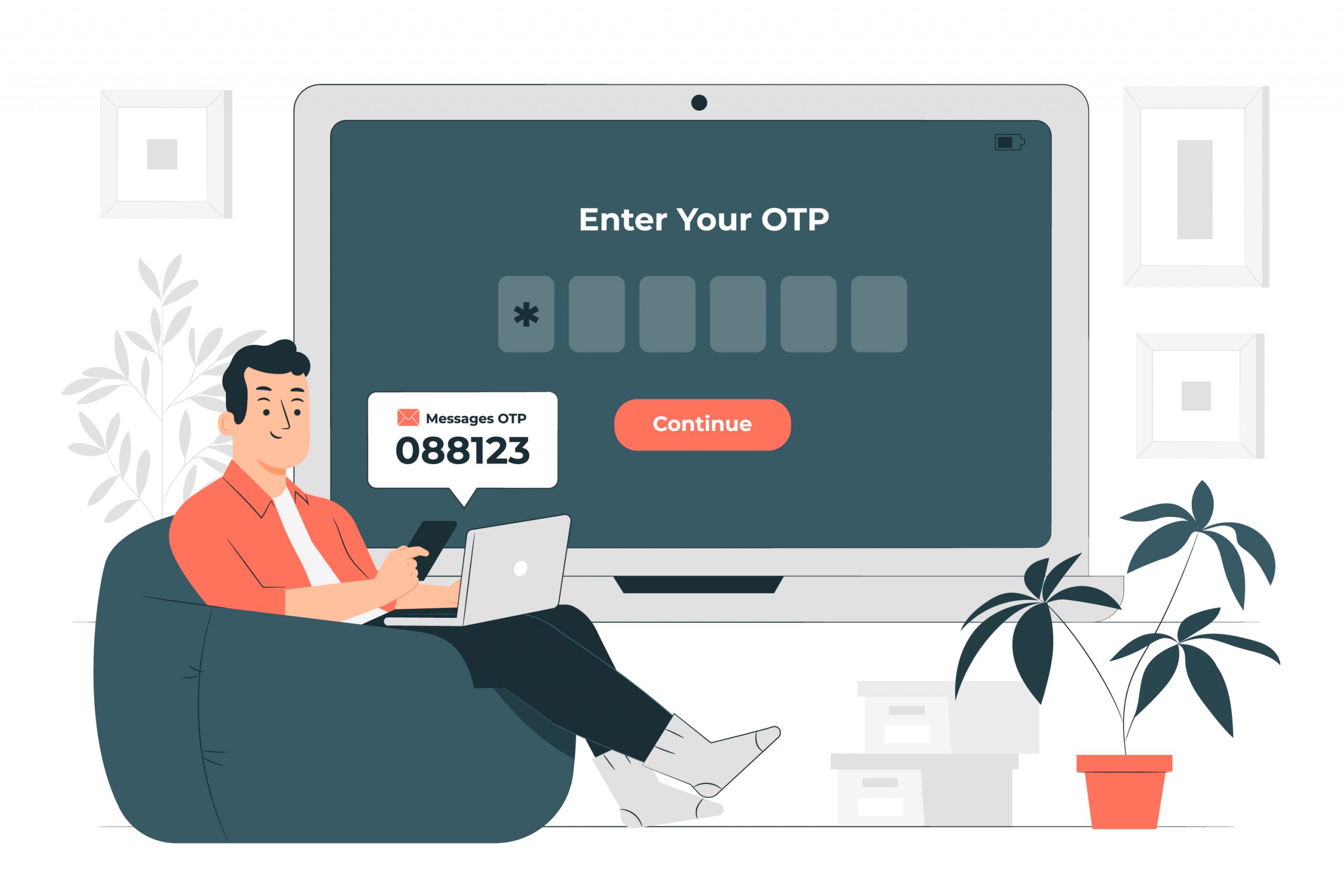A one time password OTP is a generic series of numbers or alphanumeric to be used to authorize transactions or login sessions. OTP can only be used once and can expire or has a time-out session. So, you must enter the OTP before the time out.
OTP is considered more secure than user-created passwords because OTP is unique, changes periodically, and can only be used once. So, One time password method offers more protection to login sessions, transactions, or authorizations. Read the below article to know one time password meaning and examples.
What Are One-Time Password (OTP)?
A one time password or OTP also called a passcode, is a string of numbers, characters, alphabetical, or a combination of all of them to authorize a user in a login attempt, transaction, or authorization. This OTP is created by an algorithm combining several pieces of data such as contextual information, previous login session, or time-based data.
OTP provides the user with a mechanism of a login session to network service uniquely and securely. It is because OTP can only be used once. You cannot use the same OTP for repeat login sessions unless you request the new one.
In this digital world, you can find OTP in almost every activity, mostly in login sessions. However, OTP is only for a one-time session and not for the long term.
You cannot use OTP to log in to your email or e-banking unless you forget your password and want to request a new password. OTP will be used to verify that you are a real human who requests it.
An online shopping payment session is a one time password example. In certain types of payment such as e-wallet or credit cards, you will have to enter OTP to authorize the payment. The system will send the OTP to your device to authorize the payment.
How One-Time Password Work?
One time password authentication is made by a series of complicated algorithms. Once the user requests a one time password OTP, the system will create an OTP. The algorithm then will create a series of unique codes containing a combination of numbers, characters, and alphabets.
You will receive OTP in SMS, WhatsApp, or email. OTP has a time limit and you need to enter the passcode before it expires. If you run out of time and the OTP has expired, then you can ask for the new one. OTP is only sent to the user who requests it and can only be used once.
One-time password authentication will not delete or intrude on your user-created password. For example, should you forget your email password and you cannot log in, then you ask to create a new password.
The system will send you OTP to verify that it is you, then you can create a new password after that. That is how it works.
Advantages of One Time Passwords
After knowing one time password definition, it is time to know that using a one time password OTP brings many benefits. Not only to personal users but also to the company as well as those who work in the IT department. Below are the advantages of using one-time password authentication:
1. Enhanced Security Benefits
OTP one time password prevents common pitfalls users used to face. On the IT administrator or security manager side, they don’t have to fuss about combination rules, weak passwords, sharing credentials, or same password re-usage.
2. Improve User Experience and Convenience
Using OTP improves user experience and convenience. Not only it protects users from pitfalls, but it is also making login sessions or transactions faster. The user only needs to ask for a passcode and doesn’t have to create a passcode on their own.
3. Compatibility with Existing Authentication Methods
One time password OTP doesn’t damage the existing authentication methods. For example, you need to create a new password and username for a login attempt. OTP will be sent and used only to verify the attempt and have no correlation with the login password you create. You can always use your login password without the OTP.
4. Flexibility for Different Types of Use Cases
OTP can be used in many cases, from banking or payment transactions, login attempts, signature authentication, and many more. A one-time password can also be used to protect the company server from unwanted attempts such as malware or hackers.
Types of One-Time Passwords
There are two types of OTP, hash-based one-time passwords (HOTP) and time-based one-time passwords (TOTP). These two types of OTP are using the same inputs to create OTP: static values called secret keys and moving factors that changed every time you ask for a new OTP.
Below is a review of the two types of one-time passwords:
1. Time-based One-Time Password
Similar to the HOTP, the TOTP (time-based one-time password) secret key or seed is also static, but with a different moving factor. In TOTP, the moving factor is time-based, as the algorithm generates a unique OTP using a time counter as the second input, rather than a running counter.
To determine the time counter, the current Unix time is divided by a pre-set value called the timestep. This time step is the duration for which an OTP remains valid, typically 30 to 60 seconds, but sometimes up to 120 seconds.
The secret key/seed and timestep are then processed through a cryptographic hash function to produce the OTP. However, if the password is not used within the stipulated timestep, it expires and a new OTP request must be generated.
This process ensures that the generated OTPs are only valid for a limited period and provides an additional layer of security against potential unauthorized access.
2. Hash-Based One-Time Password
The hash-based one-time password is an OTP based on events. This type of OTP is created based on hash-based message authentication codes. The system generates the code by a counter, activated by each event.
Hash-based OTP will appear as a generation of tokens known only by the user and the server. Users will receive tokens based on a hash algorithm and don’t come on a time basis. It will be valid until the user requests the following code.
The Future of One-Time Passwords
One time password OTP is used by millions of users around the world because it is easier and more secure than a user-created password. It is an enhanced user experience and offers layers of protection. Users only need to ask for this code to verify every attempt with or without an internet connection.
However, a one-time password is also facing a challenge. Users are hard to please and tend to always look for something better, easier, faster, and more practical. OTP now seems to be replaced or needs to be supported by another layer of authentication.
Face detector or fingerprints seems easier than asking for a code that is quickly expired. These two types of authentications give users more protection for example when they lost their phone, only the user can receive push notifications on the device.
Conclusively, despite many challenges ahead, using a one time password OTP is good for business. It enhances user experience, protects the business itself, and it will be more convenient for both the user and business owner.
Don't compromise your business's security! Implement OTP authentication with Fazpass today. We are an all-in-one Multi-Factor Authentication Solution Service Provider that helps enterprises engage with Omnichannel and Multi-Provider with just Single API Integration.
Say goodbye to the hassle of managing authentication processes and choose our seamless and cost-effective solution for your business's multi-factor authentication needs. Contact us now to learn more about our platform and how we can help you strengthen your security!










